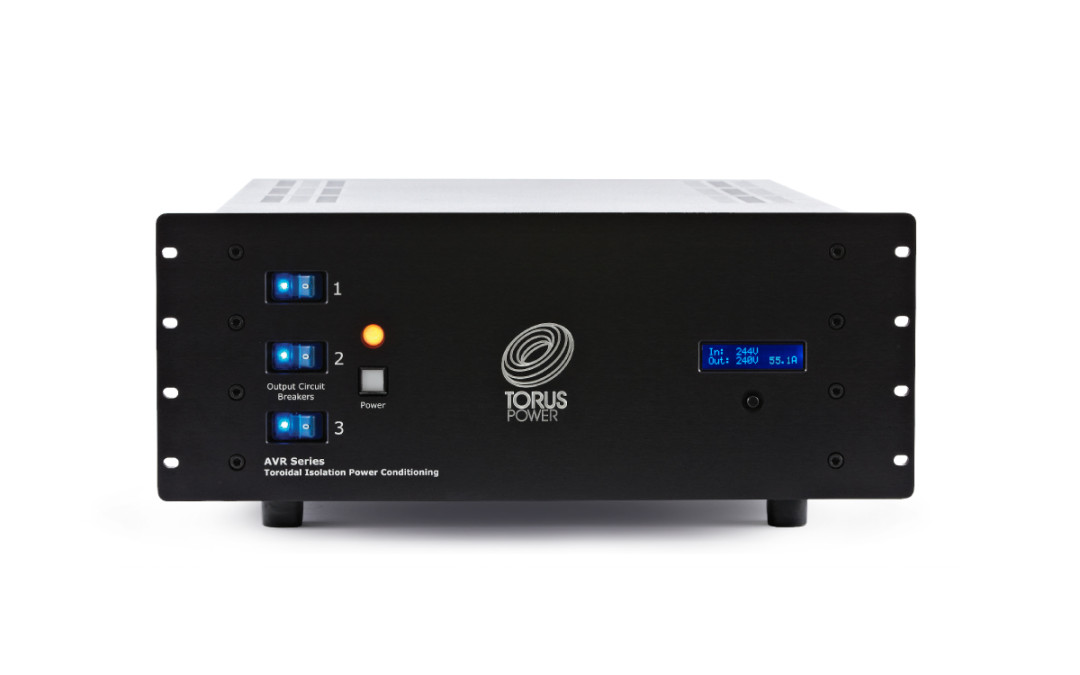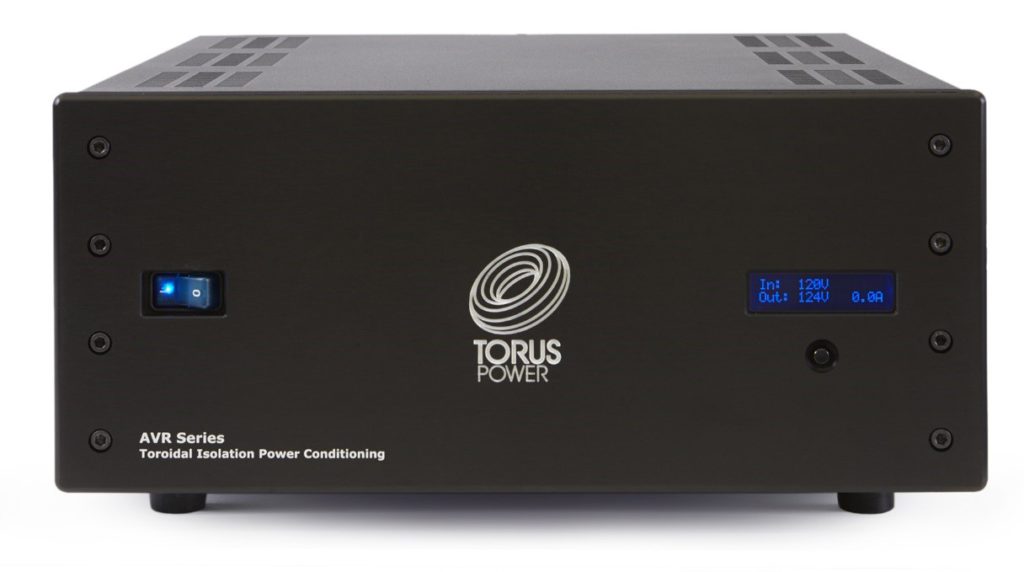
Torus Power Toroidal Isolation transformer with automatic voltage regulation
Electrical voltage is not always stable
Today’s electrical power grid is a complex and evolving system. New residential and commercial developments put increasing strain on the system at the very same time as the number of electronic devices we use grows daily. In addition, many older residences are being rebuilt and upgraded with much larger power demands that are outpacing the development of existing electrical infrastructure. The result of this growth is often a fluctuating electricity supply, which can lead to voltage sags, brownouts, and power surges.
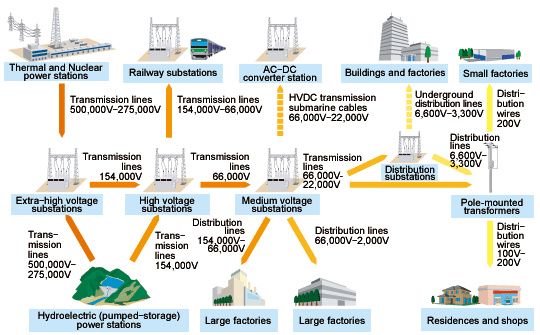
Example of electrical infrastructure
The power fluctuations–voltage sags, brownouts and surges—that result from a variable grid can shorten equipment life and even destroy electronic components. A voltage sag is a short-term drop in voltage. Sags are usually caused when heavy loads like motors are switched on. The resulting inrush current causes the line voltage to drop for a short period of time. A longer-term voltage drop is known as a brownout. Brownouts are often imposed by electrical utilities at times of high demand. A voltage surge, on the other hand, is the opposite of a sag. Surges generally occur when heavy loads are disconnected from the power line.
High-end home electronics— including vacuum tube amps and preamps, computers and network attached servers, modern digital control systems, LED screens, projectors, and high fidelity speakers— are especially susceptible to line voltage fluctuations. In addition to damaging or ruining AV and control equipment, voltage fluctuations can also cause discernable performance problems: a collapsed soundstage, loss of visual fidelity, and communication issues in control systems that are supposed to provide seamless control of a home’s AV systems.
What Is Voltage Regulation?
Voltage regulation units are designed to provide a steady and reliable output voltage regardless of voltage fluctuations at the input, preventing sags, surges, and brown-outs from harming electronics. Regulating voltage not only protects expensive home audio visual gear, but can actually help best-in-class equipment achieve even cleaner sound and better pictures. Voltage regulation techniques can effectively counteract the effects of voltage sags, brownouts, and surges. The objective with any voltage regulation unit is to provide a steady and reliable output voltage regardless of voltage fluctuations at the input.
Why Use Voltage Regulation?
There are two big reasons for regulating the line voltage that powers audio, video and control systems: protection and performance. As mentioned above, variations in supply voltage can be harmful and even fatal to electronic components. An unregulated electrical supply can also lead to problems that can be easily seen in video systems, heard in audio equipment, and experienced in digital control systems.
How Can Electrical Line Voltage Be Regulated?
There are four ways to regulate utility voltage:
1. A system that uses an autotransformer with measuring and selection circuitry to choose the best tap for the desired output voltage. Voltage regulation systems that use autotransformers are less expensive but they do not offer any isolation, noise removal or high current delivery benefits.
2. An inverter or regenerator which changes the incoming AC to DC and then back to AC again. Inverting/regenerating units produce a pure sine wave output but they have a hard upper limit when it comes to output current. This “throttling” of available current can be easily heard, especially with dynamic program material.
3. A full online UPS system which adds battery backup to the inverter/regenerator design. Full online UPS systems can also deliver pure sine wave output, even when utility power is lost, but they are hindered by the same hard upper limit in output capacity. In addition, although battery technology has come a long way in recent years, battery life is still a concern and replacement batteries are expensive.
4. The Torus Power method. Our automatic voltage regulation units use Toroidal Isolation transformers and microprocessors to monitor and control the output voltage, seamlessly switching the multi-tapped transformer to the correct setting.
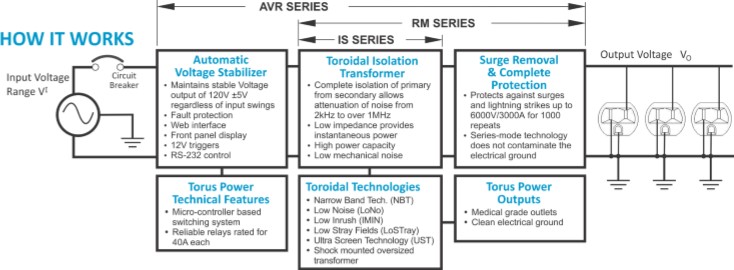
Torus Power isolation transformers fully isolate power from the utility for better protection and a clean electrical ground. The units offer low output impedance for high instantaneous current delivery, and unmatched reduction of noise and interference for better audio video quality. Torus Power Automatic Voltage Regulation units offer the full feature set of our Toroidal Isolation transformers for those seeking the highest quality of power protection and the best performance from their system.

Relay board used to control transformer input taps to regulate voltage on Torus Power AVR 20
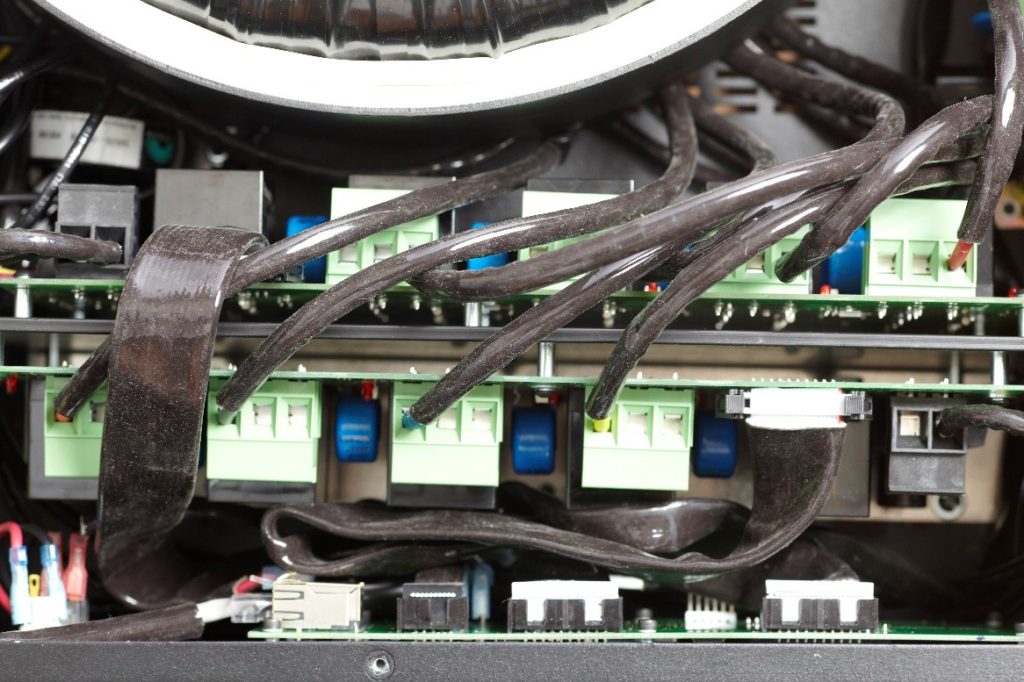
Multiple input taps on the Torus Power WM AVR 60 BAL transformer provide stable output voltage to connected equipment.
With Torus Power voltage regulation units, in a typical North American system, the line voltage can vary from less than 90 volts to more than 130 volts and the unit will output a steady 120 volts ± 5 volts. Similar regulation is achieved with the international Torus Power voltage regulation units used in countries where the standard line voltage is 127, 220, 230 or 240 volts.

Torus Power model AVR 20 Interior View
Torus Power model AVR 20 – interior view
From the compact yet robust 10-amp TOT AVR to the gigantic 90-amp shelf mount, rackmount or wall mount units, Torus Power has a voltage regulation unit to fit any system. Our international lineup starts with the 4-amp TOT AVR and runs all the way up to our massive 45-amp units. Only automatic voltage regulation through the use of Toroidal Isolation addresses the twin pillars of protection and performance in high-end audio video systems. Whether the goal is protecting an AV investment, coaxing superior performance out of the system—or both—Toroidal Isolation holds the answer.
Download PDF
